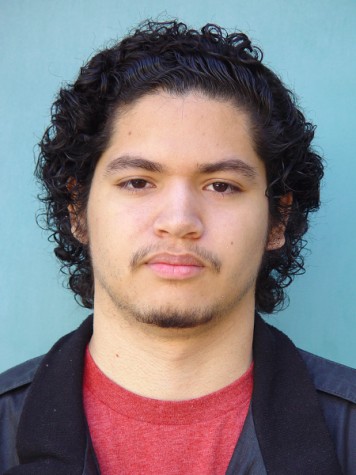The lecture “Economics of Immigration” in Kreider Hall last Thursday attracted about 50 people willing to learn more about why people leave their country and the causes and effects behind migration.
The lecture was presented by Steven White, emeritus professor of economics, and Melinda Burns, a past reporter for the Santa Barbara News-Press for 21 years.
Not only did the lecture focus on the economic reasons and consequences of immigration, but it also focused on the book “Enrique’s Journey” by Sonia Nazario. The starting point of the lecture was to examine why Enrique’s mother came to the U.S. in the first place.
To answer that question, White introduced the “push-pull theory” of immigration, which states that the three main reasons for immigration are religious persecution, political oppression and economic hardship. In the case of Enrique’s mother, she left her native country of Honduras because of economic hardship.
“Even getting a low-paying $6 an hour job in California is a tremendous opportunity for people working for a few pesos a day in Honduras,” White said.
White presented many true or false slides in his Powerpoint presentation, including one which stated that all foreign-born residents of the U.S. are undocumented. White stated this slide was false, pointing out that out of all the immigrants living in the U.S., 33 percent of them are naturalized, 32 percent of them are undocumented, 28 percent of them are legal permit residents (with green cards) and 7 percent of them are refugees.
The lecture showed that newly arriving immigrants take low-paying jobs in agriculture, hospitality and construction because not many American-born citizens are willing to take those jobs.
“You know it yourself,” White said. “You wouldn’t be lining up for the majority of difficult jobs if the pay was just $5 an hour.”
In reality, these immigrants are taking the jobs that American-born citizens do not want and thus filling the void that is vital in sustaining a balanced economy.
White also stated that there is no impact on the wages of low-skilled workers from the influx of immigrants to the U.S. because immigrants help fuel the nation’s growth and have a positive effect on the income of native born workers.
In addition, undocumented workers are excluded from receiving federal benefits such as food stamps, welfare, housing supplements, Medicaid and Social Security.
A common myth about new immigrants is that they cost more in government services each year than they pay in taxes. White argued that new immigrants do indeed pay taxes.
“[Immigrants] have money withheld from their checks; they pay sales tax when they pay for food and clothes. If they rent an apartment, they pay rent to their landlord who pays for property tax; so immigrants pay taxes,” White said.
The lecture then shifted to discuss how the subsidies paid to U.S. farmers lowers the cost of corn production and increases illegal immigration from Mexico and Central America into the U.S.
“This has caused the price of corn to go so low, that it drives farmers away from third-world countries,” White said. “They have been growing corn for 500 years to survive, and now you can just go and buy American corn cheaper than they can produce it.”
In Mexico alone, the corn production in the U.S. has driven 2 million peasants off their land in search of economic opportunities. On this note, White introduced guest speaker Melinda Burns, who was fired two years ago from the Santa Barbara News-Press for union organizing along with eight other reporters of the paper.
“I spent a lot of time in the strawberry fields in Santa Maria, and I went frequently to Mixtec regions in Mexico in the state of Oaxaca,” Burns said.
Burns’ purpose for venturing into Mexico was to investigate the causes of why people emigrated from Mexico to pick strawberries in Santa Maria. One of the reasons is because of the large subsidies paid to corn farmers.
“There’s no competition between 75,000 corn farmers in Iowa and 3 million farmers in Mexico,” Burns said. “There’s no way Mexico can compete given the tremendous subsidies that the U.S. government supplies to the Iowa corn farmers.”
The average annual subsidy in the U.S. is $21,000, in comparison to Mexico which is only $700. To expand on some other differences between the U.S. and Mexico, the average irrigated acres per farmer in the U.S. is 18 acres, in contrast to only two in Mexico. Furthermore, the amount of time it takes for labor to produce one ton of corn is only one hour in the U.S., whereas in Mexico it takes a full 18 days to produce the same amount of corn.
The dissimilarity is immense, and Burns knows the adversity that the Mixtecs have to live through. “I picked berries one day, I thought I was going to die,” Burns said.
Having been to the Mixtec community of Santa Maria in 1995, Burns continued to do several follow-up stories until she was fired in October of 2006. She is currently fighting for her job back at the Santa Barbara News-Press.
The lecture ended with White and Burns answering questions about the connection between undocumented workers and welfare benefits, as well as some discussion on the corn peasants who were driven out of Mexico.


